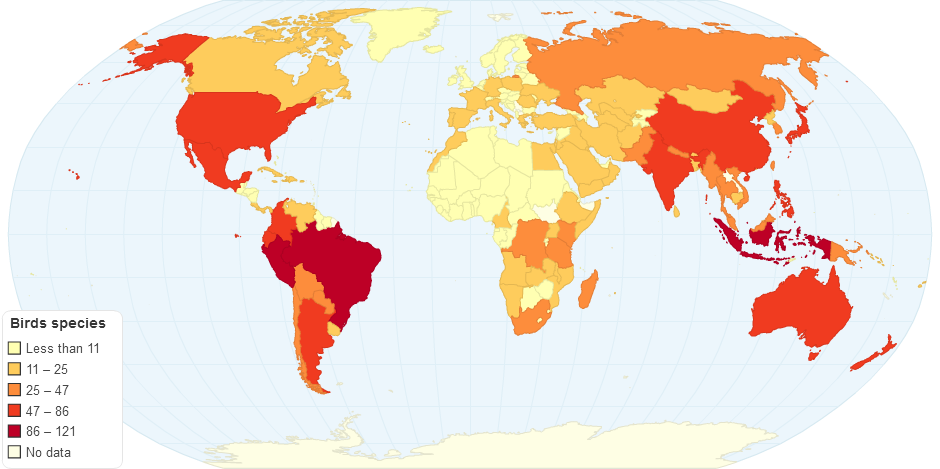This chart shows Birds Species at Risk by Country.
Birds are a group of endothermic vertebrates, characterised by feathers, a beak with no teeth, the laying of hard-shelled eggs, a high metabolic rate, a four-chambered heart, and a lightweight but strong skeleton.
Birds live worldwide and range in size from the 5 cm bee hummingbird to the 2.75 m ostrich. They rank as the class of tetrapods with the most living species, at approximately ten thousand, with more than half of these being passerines, sometimes known as perching birds or, less accurately, as songbirds.
Birds have wings which are more or less developed depending on the species; the only known groups without wings are the extinct moas and elephant birds. Wings, which evolved from forelimbs, give most birds the ability to fly, although further speciation has led to some flightless birds, including ratites, penguins, and diverse endemic island species of birds.
The digestive and respiratory systems of birds are also uniquely adapted for flight. Some birds, especially corvids and parrots, are among the most intelligent animals; several bird species make and use tools, and many social species pass on knowledge across generations, which is considered a form of culture. Many species annually migrate great distances.
10 years ago

